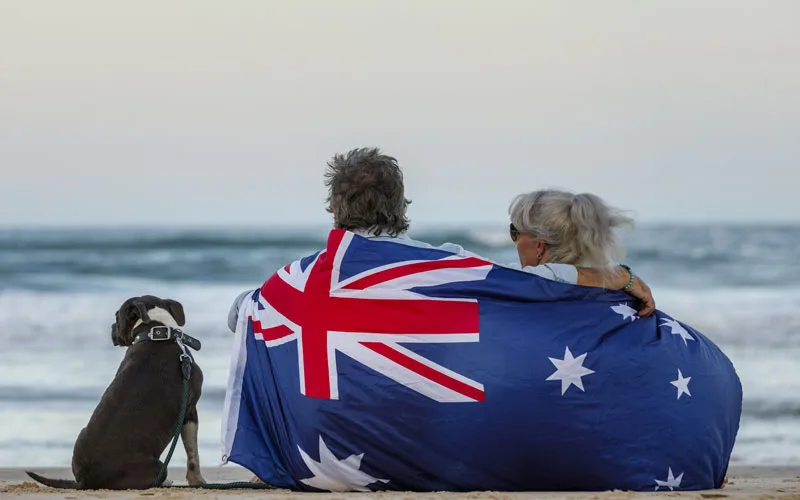On This Page...
ToggleDe Facto Visa Australia – A Guide for Couples
By Nilesh Nandan, Immigration Lawyer
Edited by Anh Le, Immigration Lawyer
On this page
- Overview
- Eligibility & the 12-Month Rule
- Onshore vs Offshore vs PMV
- Evidence You Must Show
- Step-by-Step Application Checklist
- Common Questions
- Book a Consultation
What is a De Facto Visa?
If you are in a committed relationship with an Australian citizen, permanent resident, or eligible New Zealand citizen, you may be able to apply for a partner visa under the de facto stream. This pathway allows you to stay in Australia with your partner and, in time, gain permanent residency.
In my practice, I meet many couples who are unsure whether their relationship qualifies as de facto. This guide explains the rules in plain English, so you know where you stand and how to avoid mistakes that can delay or even sink your application.
Eligibility & the 12-Month Rule
To qualify as de facto, you normally need to prove that you and your partner have been in a genuine relationship and living together for at least 12 months before lodging your application. This is known as the 12-month rule.
Exceptions: If you register your relationship in certain states or territories (like New South Wales, Victoria, Queensland, or Tasmania), the 12-month requirement can be waived. This is a crucial option for couples who haven’t yet clocked up a full year together under one roof.
Beyond the 12-month rule, you must show that your relationship is genuine and continuing. Immigration looks at four key areas: financial, household, social, and commitment.
Onshore vs Offshore vs Prospective Marriage Visa
Here is a comparison of the main visa pathways for couples:
| Type | Where You Apply | Work Rights | Travel Before Grant | Pathway |
|---|---|---|---|---|
| Onshore Partner Visa (820/801) | Inside Australia | Yes, usually (on bridging visa) | BVB required to travel | Temporary (820) then Permanent (801) |
| Offshore Partner Visa (309/100) | Outside Australia | Yes, once in Australia | Must wait offshore for decision | Temporary (309) then Permanent (100) |
| Prospective Marriage Visa (Subclass 300) | Outside Australia | Yes, once in Australia | Must wait offshore for decision | Enter on 300 → marry → apply for 820/801 |
Evidence You Must Show
Immigration wants to see proof that your relationship is genuine. Here are the four pillars:
- Financial: Joint bank accounts, shared bills, joint purchases.
- Household: Living together, shared lease, joint utilities.
- Social: Photos together, statements from friends and family, joint invitations.
- Commitment: Future plans, wills, superannuation beneficiaries.
In my experience, weak evidence in one pillar can be balanced by stronger proof in another — but the more complete your evidence, the safer your application will be.
Step-by-Step Application Checklist
- Confirm eligibility: relationship length or registration.
- Gather documents: passports, identity, police checks, health checks.
- Collect relationship evidence under the four pillars.
- Prepare at least two Form 888 statutory declarations from friends and family. In certain cases, two statutory declarations prepared by Australian citizens or permanent residents will also be required for a valid application.
- Lodge online via ImmiAccount.
- Pay the visa fee (over AUD 9,000 – check current fee).
- Apply for a Bridging Visa if onshore.
- Wait for assessment and respond to any requests from Immigration.
Common Questions About De Facto Visas
What is the 12-month rule?
You must usually show 12 months of being in a genuine relationship and living together, unless you register your relationship in a state that allows this.
How long will my application take?
Processing can range from 12 to 24 months. It depends on the completeness of your application and Immigration’s workload. Check the official processing times.
Do I get work rights?
If you apply onshore, you get work rights on your bridging visa. Offshore applicants can work once their temporary visa is granted.
Can I travel during processing?
Onshore applicants need a Bridging Visa B if they want to travel (only if they hold a Bridging Visa A). Offshore applicants can travel freely until the visa is granted.
What happens if my visa is refused?
You may have review rights at the Administrative Appeals Tribunal (AAT). This is a complex process where legal advice is essential.
Book a Consultation with Me
Partner visas are expensive, complex, and high-risk. A mistake can cost you thousands and months of stress. I can help you get it right the first time. Book a consultation today.
Regards,
Nilesh Nandan
Lawyer Principal | MyVisa Lawyers
https://myvisa.com.au






523 Responses
Hello there,
I currently hold a student visa that will expire on the 30/08/2020. My partner is an Australian citizen and we are looking to apply for a de facto partner visa by registering our relationships. We have been living in separate address and wish to continue to do so until we get officially married (planning to at 2022) due to cultural reasons. Is that possible? Do we have to move in together for the visa or is registering our relationship enough? We have been in a public relationships for exactly 4 years now (24/04/2016). We have photos of us going on trips, attending weddings and photos evidence of anniversaries and birthdays celebration as a couple for the last 4 years. My parents even included him in the most recent family portrait (professionally done).
What evidence do we need?
Please advice.
I agree that registering your relationship well indeed need help you.
As a matter of law you will need to be in that defacto relationship on the date you apply for the visa.
There can be many circumstances where de facto couples are not cohabiting….. Or not actually living together at the same residence.
Common reasons are because of work requirements, study requirements or restrictions on one’s visa status.
Just because you’re not cohabiting does not mean you will fail the requirement for a defacto visa.
I am have a uncomfortable about the reasons you have put advice for not co-habiting. there’s a real risk that a Delegate of the department of home affairs will form of you that you are in fact only boyfriend and girlfriend rather than de facto couples hoping to go into a spousal relationship only after marriage.
If you wish to go down this path, I would be very careful.
Hi there, I hope you doing fantastic!
Actually i about to apply de facto visa in coming months and I currently living with my partner(PR) since last 18 months With all evidence and i take care my partner’s children too. So my question is: may I eligible for Direct PR after provisional visa grant, if i wait 6 more months?
No. First you need to lodge your partner visa application. Currently it takes at least 20 months (but give or take 7 months) to get a decision in relation to your partner visa application.
While your 24 months period does start to accrue from the minute you lodge your 820 Visa or 309 visa, there is no such thing as “direct entry” in relation to spouse visas, simply because you have been together for 24 months.
There are circumstances where you will qualify for the grant of the 820 provisional partner visa as well as the 801 permanent residence visa in rapid succession, but your case is not one of these circumstances.
Hello there, i have one important question. My permanent resident visa subclass 801 was granted 24 hours ago and i broke up with my sponsor 1 week knowing this outcome and moved to different places, I now want to apply for centerlink help since I lost my job due of coronavirus and im scared that immigration will find out we broken up recently and potentially lose my PR. Is that possible?
Yes it is possible because you must be in the genuine and continuing relationship with your partner at the time of decision to grant you a permanent visa.
Hi, can I still allowed to work and live here legally in Australia when my partner end with me.i am holding bridging visa A till now for he doesn’t cooperate with the processing.he said not now.
This is really unfortunate You need to have a valid visa to remain law for the present in Australia.
If you have previously advised the department that you are in a relationship and this relationship has come to an end then you need to update immigration. You can make this notification using form 1022 notification of change of circumstances.
Hi there
My partner and I applied for the de facto visa a year ago and have lived together since August 2018 – however have decided to live seperately for a year before we buy a place together.
Will this affect my application?
This is a great question.
Of course you are making it harder for yourself but technically if you’re living apart and you have a rational reason for doing so and you are only living apart temporarily there there are arguments that can be made that your relationship is never the less one which satisfies the criteria for the grant of the partner visa.
I would recommend you get some advice on this make sure that you cover your backside. it is quite a bold thing to do under current visa regulations but one which people should in fact do if the circumstances so require.
Fortune favours the brave I say!
Hi Nilesh,
My question may look a bit strange, but please pardon me. I really need some clarity as to what a defacto-relationship means? And basically, what I like to know is if “romance is an important factor/requirement by immigration dept? I am female and I have been friends with an Australian lady whom I have been living with for the past 4 and a half years. We do all things as partners do (travels, share bills, attend the same functions, have mutual friends etc). Do you think I am eligible to apply for a defacto-visa or not? I am currently on a temporary activity visa and my visa expires soon.
Hello Mr. Nandan,
My partner is currently sponsored through her company on a 408 visa, and I was included in her application.
As I work for a different organisation to her (she had previously been sponsored on a 457 visa, which allows partners/spouses to work), I was required to provide details of my current employment, which I assumed meant I could continue to work as the de facto partner of a 408 visa holder.
However, having searched the Government’s immigration website and various immigration forums, I cannot find any information categorically stating that I can still legally work in Australia as the partner of a 408 visa holder – what are the work conditions for partners of 408 visa holders?